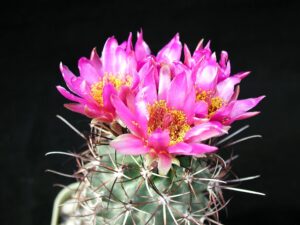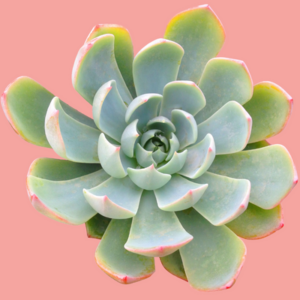Arizona, renowned for its striking landscapes and vibrant ecosystems, serves as a sanctuary for a remarkable variety of cactuses. These enigmatic plants have developed unique adaptations to thrive in the arid desert, captivating the imagination of botanists, artists, and nature enthusiasts alike. Here, we delve into the realm of Arizona’s most iconic cacti, exploring their distinctive features and the aesthetic allure that they contribute to the Southwestern landscape.
The Saguaro: A Living Icon of the Desert
Perhaps the most iconic representation of the American Southwest, the Saguaro cactus (Carnegiea gigantea) stands as a formidable sentinel against the backdrop of Arizona’s sun-scorched terrain. This colossal cactus can reach heights surpassing 40 feet and may live for over 150 years. Its characteristic upward-reaching arms, which typically begin to develop after 50 years of growth, evoke a sense of grandeur that is both striking and symbolic of resilience. The Saguaro blooms spectacularly in late spring, adorned with vibrant white flowers, which attract a variety of pollinators, including bats and bees. This annual floral display not only enhances its visual appeal but also signifies the cyclical nature of life in the otherwise harsh environment.
What makes the Saguaro particularly intriguing is its ability to store vast amounts of water within its fleshy tissue, allowing it to endure prolonged dry spells. This remarkable adaptation not only sustains the cactus during arid periods but also plays a crucial role in supporting the surrounding ecosystem. The Saguaro’s fruit, a bright red berry, offers a vital food source for numerous desert inhabitants, from birds to mammals, further embedding it in the intricate web of life that flourishes in Arizona’s deserts.
The Organ Pipe: Nature’s Unique Sculpture
Another striking specimen of Arizona’s desert flora is the Organ Pipe cactus (Stenocereus thurberi), aptly named for its resemblance to a musical instrument. This cactus can grow to an impressive height of 20 feet and is characterized by its multiple, tall, cylindrical arms that rise from a central base, creating an eye-catching, fan-like distribution. The Organ Pipe typically flourishes in the southern reaches of Arizona and is unique in its preference for lower altitudes and richer soils, often thriving in volcanic regions.
In the summer months, the Organ Pipe cactus showcases mesmerizing clusters of white flowers, which bloom at night, emitting a subtle nocturnal fragrance that attracts nocturnal pollinators such as moths. This aspect adds an allure to its aesthetic, as the cactus transforms into a luminescent figure under the moonlight. One can appreciate the remarkable craftsmanship of nature while observing the precarious balance of beauty and survival, a true reflection of the harsh yet enchanting desert landscape that fosters such fascinating life forms.
The Cholla: A Spiky Enigma
Moving into the realm of the Cholla cactus, one encounters a complex variety of species, each with unique attributes that contribute to their intrigue. The Teddy Bear Cholla (Cylindropuntia bigelovii) is one such representative, notorious for its deceptively appealing appearance. Covered in dense clusters of spines that seem soft and fluffy, this cactus often misleads unwary passersby who venture too close. Characterized by its relatively short stature, typically reaching heights of 3 to 10 feet, the Teddy Bear Cholla thrives in the Sonoran Desert, where it enjoys sunny dispositions and well-drained soils.
The aesthetic charm of the Cholla lies in its vibrant green stems, punctuated by golden spines, which capture the play of sunlight in mesmerizing ways. During blooming seasons, delicate yellow flowers emerge amidst its spines, providing a stark contrast that enhances its aesthetic delight. The Cholla’s ingenious method of propagation, where it drops segments of its body that take root and grow into new plants, embodies the theme of resilience. This adaptive strategy allows the Cholla to flourish in often inhospitable terrains, showcasing nature’s ability to thrive under adversity.
The Barrel Cactus: A Formidable Survivor
The Barrel cactus (Ferocactus spp.) contributes yet another dimension to Arizona’s rich cactus diversity, recognizable by its stout, barrel-shaped form. This cactus, which can grow to over 10 feet in height, exhibits a striking arrangement of ribs, adorned with sharp spines that serve as an effective deterrent against herbivorous threats. The aesthetic appeal of the Barrel cactus is further amplified by the vibrant tubular flowers that crown its top, ranging in hues from the most vivid yellows to deep reds, attracting a variety of pollinators and beautifying the arid landscape.
Barrel cacti possess an extraordinary ability to retain moisture, an essential adaptation that enables them to endure prolonged drought conditions. As visitors traverse Arizona’s shimmering desert, the sight of these majestic cacti standing resilient against the blazing sun evokes a sense of admiration and respect for their endurance and beauty. With longevity that can span several decades, the Barrel cactus embodies the spirit of the desert, a testament to the tenacity of life amidst challenging conditions.
In conclusion, Arizona’s cacti are not merely plants; they are vital components of a rich ecological tapestry. Each species encapsulates the beauty, resilience, and complexity of life in the desert, showcasing an exquisite interplay between form and function. From the towering Saguaro to the unique Organ Pipe, the enigmatic Cholla, and the formidable Barrel cactus, these iconic cacti reflect the awe-inspiring diversity of the Arizona landscape. Through an understanding of their characteristics and adaptations, one can truly appreciate the beauty and ingenuity that these plants contribute to the Southwest’s natural heritage.





Leave a Comment